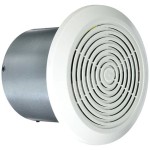Bathroom Sink Faucet Leaking: Causes, Diagnosis, and Repair
A dripping or leaking bathroom sink faucet is a common household plumbing problem that can lead to wasted water, increased water bills, and potential damage to surrounding surfaces. Understanding the potential causes of the leak, accurately diagnosing the source, and implementing the appropriate repair strategy are crucial for resolving the issue effectively. This article provides a comprehensive overview of bathroom sink faucet leaks, focusing on the underlying reasons, the diagnostic process, and the necessary steps for repair, ensuring a long-term solution to this pervasive plumbing concern.
The continuous dripping from a leaky faucet can seem insignificant but adds up considerably over time. Small leaks can waste gallons of water each day, contributing to higher utility costs and placing unnecessary strain on water resources. Furthermore, persistent moisture can lead to mold and mildew growth in the surrounding areas, such as the sink cabinet or countertop, potentially requiring further repairs or remediation. Addressing a leaking faucet promptly is therefore essential for both economic and environmental reasons.
Beyond the immediate financial and environmental impacts, a leaky faucet can also be a sign of more significant underlying plumbing issues. Ignoring the problem can lead to corrosion, mineral buildup, and further deterioration of the faucet components, ultimately resulting in a more complex and expensive repair. Regular maintenance and prompt attention to even minor leaks can prevent these complications and prolong the life of the faucet.
Identifying the Source of the Leak
Before attempting any repairs, it is critical to accurately identify the source of the leak. Bathroom sink faucets can leak from various points, each indicating a different underlying problem. Common leak locations include the base of the faucet handle, the spout, and the connections beneath the sink. A careful visual inspection is the first step in determining the origin of the leak and the potential cause.
Leaks around the base of the faucet handle often indicate a problem with the O-rings or cartridges within the faucet assembly. These components provide a watertight seal and can wear out over time due to constant use and exposure to water. Similarly, leaks from the spout may be caused by a worn-out seat or valve that prevents the water flow from being completely shut off. These leaks typically manifest as a continuous drip, even when the faucet is supposedly turned off.
Leaks originating beneath the sink are usually due to loose connections in the supply lines or drainpipe. The supply lines connect the faucet to the hot and cold water sources, and the connections can become loose over time due to vibrations or temperature fluctuations. Drainpipe leaks are often caused by corrosion or degraded sealant around the joints. Identifying the specific location of the leak is crucial for selecting the appropriate repair method and parts.
To pinpoint the exact source of a leak, it may be necessary to dry the area completely and then slowly turn on the faucet, observing where the water first appears. Using a flashlight can help illuminate hard-to-reach areas and make it easier to identify the leak's origin. In some cases, the leak may be intermittent, only occurring when the faucet is used in a specific way. In these situations, it is important to carefully observe the faucet under different operating conditions to fully understand the problem.
Common Causes and Repair Solutions
Once the source of the leak has been identified, the next step is to determine the underlying cause and implement the appropriate repair solution. The specific repair required will depend on the type of faucet, the location of the leak, and the condition of the faucet components. Here are some common causes of bathroom sink faucet leaks and the corresponding repair steps.
Worn-Out O-Rings: O-rings are small, rubber gaskets that create a watertight seal between the faucet components. Over time, these rings can become brittle, cracked, or worn out due to constant friction and exposure to water. To repair a leak caused by worn-out O-rings, the faucet handle and spout need to be disassembled to access the O-rings. The old O-rings should then be carefully removed and replaced with new ones of the same size and type. It is important to lubricate the new O-rings with plumber’s grease before reassembling the faucet to ensure a smooth and long-lasting seal.
Damaged Cartridges: Cartridge faucets use a cartridge to control the flow and temperature of the water. If the cartridge is cracked, damaged, or worn out, it can cause leaks around the base of the handle or from the spout. Replacing a damaged cartridge involves removing the handle and spout assembly to access the cartridge. The old cartridge is then removed and replaced with a new one. Ensure that the new cartridge is compatible with the specific faucet model and that it is properly seated before reassembling the faucet.
Corroded Valve Seats: Valve seats are the stationary part of the valve that the rubber washer presses against to shut off the water flow. Over time, mineral deposits and corrosion can build up on the valve seats, preventing the washer from creating a tight seal. To repair a corroded valve seat, the faucet needs to be disassembled to access the valve seat. A valve seat wrench can be used to remove the old valve seat and replace it with a new one. If the valve seat is only slightly corroded, it may be possible to clean it with a wire brush or a valve seat dressing tool.
Loose Connections: Loose connections in the supply lines or drainpipe are a common cause of leaks beneath the sink. To repair a loose connection, first, shut off the water supply to the faucet. Then, use a wrench to tighten the connections on the supply lines and drainpipe. Be careful not to overtighten the connections, as this can damage the fittings. If the leak persists after tightening the connections, it may be necessary to replace the supply lines or drainpipe. When replacing supply lines, use Teflon tape on the threads to create a watertight seal.
Worn-Out Washers: Compression faucets rely on rubber washers to seal the water flow. Over time, these washers can become worn, cracked, or flattened, leading to leaks from the spout. Replacing a worn-out washer involves disassembling the faucet handle to access the washer. The old washer is then removed and replaced with a new one of the same size and shape. It is important to select a washer that is compatible with the faucet and to ensure that it is properly seated before reassembling the faucet.
Preventive Measures and Maintenance
Preventing bathroom sink faucet leaks requires proactive maintenance and regular inspection. Implementing preventive measures can significantly reduce the likelihood of leaks and extend the lifespan of the faucet. These measures include regular cleaning, proper usage, and timely replacement of worn components.
Regular Cleaning: Mineral deposits and grime can accumulate on the faucet components, leading to corrosion and premature wear. Regularly cleaning the faucet with a mild detergent and a soft cloth can help prevent this buildup. Pay particular attention to the areas around the faucet handles, spout, and base, where mineral deposits are most likely to accumulate. Avoid using abrasive cleaners or scouring pads, as these can scratch the faucet finish and damage the seals.
Proper Usage: Avoid applying excessive force when turning the faucet handles. Over-tightening the handles can damage the valve seats and washers, leading to leaks. Teach household members to use the faucet gently and to avoid slamming the handles shut. Also, avoid placing heavy objects on the faucet, as this can put stress on the components and cause them to crack or break.
Timely Replacement of Worn Components: Regularly inspect the faucet for signs of wear or damage. If you notice any leaks, drips, or unusual noises, address the problem promptly. Replacing worn components, such as O-rings, washers, and cartridges, as soon as they show signs of wear can prevent more serious problems from developing. Keeping a supply of common replacement parts on hand can facilitate quick and easy repairs.
Water Softener Installation: Hard water contains high levels of minerals, such as calcium and magnesium, which can contribute to mineral buildup and corrosion in the faucet. Installing a water softener can help reduce the mineral content of the water, prolonging the life of the faucet and preventing leaks. While installation requires a higher initial cost, the long-term benefits in terms of plumbing preservation and reduced maintenance can be substantial.
Professional Inspection: Consider scheduling a professional plumbing inspection at least once a year. A qualified plumber can identify potential problems before they escalate and provide recommendations for preventive maintenance. Professional inspections can also uncover hidden leaks or plumbing issues that may not be readily apparent to the homeowner.
By understanding the potential causes of bathroom sink faucet leaks, implementing effective diagnostic techniques, and performing timely repairs, homeowners can prevent water waste, reduce utility costs, and prolong the lifespan of their faucets. Regular maintenance and adherence to preventive measures can further minimize the risk of leaks and ensure the efficient operation of the bathroom plumbing system.

5 Reasons Your Faucet Is Dripping Water How To Fix It

The Do S And Don Ts Of Dealing With A Bathroom Sink Or Shower Leak

How To Fix Pipework A Tap Faucet Leaking Under The Sink

Bathroom Sink Drain Leaking Around Threads Premier Plumbing Inc

Properly Fixing A Leaky Sink Faucet Wallside Windows

How To Fix A Leaking Bathroom Sink Paschal Air Plumbing Electric

How To Fix A Leaky Faucet The Home

How To Fix A Leaky Faucet 5 Easy Steps

5 Reasons Your Faucet Is Dripping Water How To Fix It

How To Fix A Leaking Bathroom Sink Paschal Air Plumbing Electric







